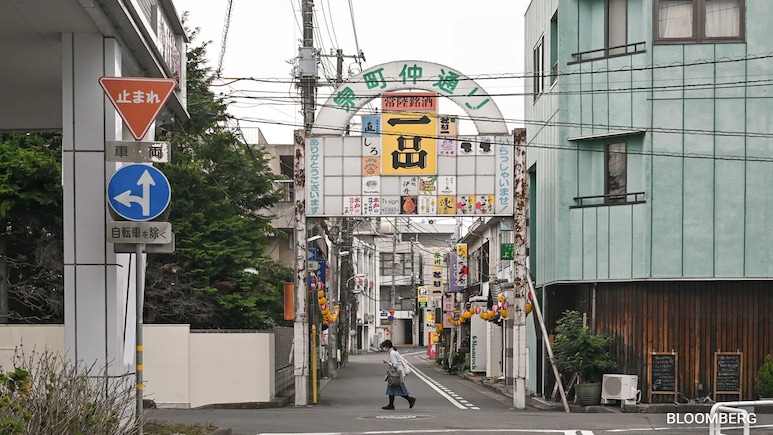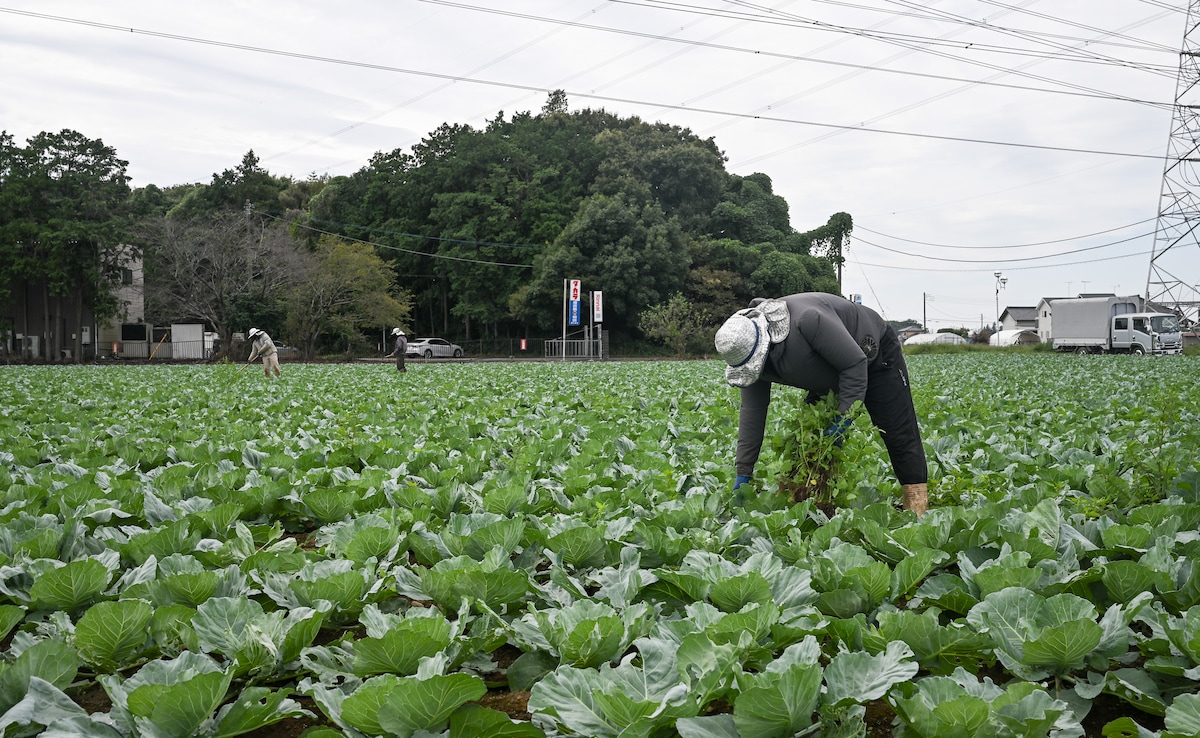
Haruo Tsukamoto, 74, is facing what he calls the hardest political choice of his life: who he should vote for to become Japan's next prime minister, and whether he should keep backing the party he has supported for decades.
The sixth-generation rice farmer in Ibaraki, northeast of Tokyo, is one of nearly a million rank-and-file members of Japan's ruling Liberal Democratic Party eligible to vote in a leadership race on October 4. The party has dominated Japanese politics for most of the postwar era, and its leader almost always becomes prime minister.
That hold is slipping.
Tsukamoto once admired outgoing leader Shigeru Ishiba, a former agriculture minister with rural roots. Now he feels conflicted, questioning if the party still stands for people like him. This summer, the government released rice reserves to curb soaring domestic prices - a move that left many feeling that urban consumers were prioritized over farmers.
"Being an LDP member doesn't do me much good these days," Tsukamoto said, contrasting how farmers today get little financial help compared with decades ago, when the party had over 5 million members and demonstrated strong support for rural areas.
The upcoming party election is more than a choice of who becomes prime minister. It comes at a time when the LDP is losing its grip on the voters who built its decades-long dominance. Rising living costs, a scandal over party funds, young people flocking to cities, and the rise of populist and far-right challengers have all chipped away at its traditional support.
On top of that, a wave of foreign arrivals - mostly tourists - has fuelled frustration that opposition parties have been quick to seize on. In just a few months, the ruling LDP coalition has lost its majorities in both houses, while smaller populist parties gained ground with sharp, simple messaging.
"We can't simply count on block votes any longer," said Hirokatsu Suda, 58, an LDP councilor in Mito, the capital of Ibaraki. "I've been an LDP member for a long time now, over 30 years, but I've never seen times as tough as this for us."
The next leader will be judged on both their policy agenda and their ability to unify a fractured party while building workable ties with the opposition. Their success will determine if Japan regains political stability or drifts deeper into uncertainty. It will also shape Tokyo's approach to external challenges, from managing relations with the US and China to strengthening security in an increasingly tense region. At home, the outcome will determine whether Japan sticks with fiscal discipline or pivots back to a stimulus-led economic strategy.
Five candidates are vying for the top job, but the race is shaping up as a showdown between Shinjiro Koizumi, a 44-year-old reformist with urban appeal, and Sanae Takaichi, 64, a right-winger promising more support for the economy and regional aid.
In last year's leadership race, Ibaraki voted for Ishiba over both Koizumi and Takaichi. With Ishiba no longer in the running this time, the prefecture's support is up for grabs.
Koizumi wants to raise wages by 1 million yen ($6,763) by 2030, reinvigorate regional prefectures by developing new industries there, and leave monetary policy to the central bank. He's the son of former Prime Minister Junichiro Koizumi, an Elvis fan who once serenaded George W. Bush with "Love Me Tender." His father privatized Japan's post offices two decades ago, a reform move remembered by some in Ibaraki for its impact on jobs and services in rural areas.
Investors are more concerned about a Takaichi win. She is likely to boost spending to stimulate growth and is in favor of distributing money to local governments to help them fight inflation. Her critics worry that she might put a brake on the BOJ's efforts to raise interest rates.
Other candidates in the running include Yoshimasa Hayashi, 64, the current chief government spokesman. He's seen as a continuity candidate and has floated the idea of a UK-style universal credit program to support struggling households. Takayuki Kobayashi, a 50-year-old conservative, wants a temporary income tax reduction. Toshimitsu Motegi, 69, a veteran foreign minister, talks about creating a positive investment cycle to spur growth.
Only two candidates will advance past the first round, which is decided by votes from LDP members across the regions and party lawmakers in parliament. The second round gives more weight to the votes of the lawmakers. Recent polls show Takaichi and Koizumi with a clear edge over Hayashi among rank-and-file members, but in the legislature, Koizumi and Hayashi lead - though many lawmakers remain undecided.
The winner is almost certain to become prime minister in a parliamentary vote after opposition party officials appear to have failed to agree on unifying behind a candidate earlier this week.
Whoever wins won't inherit a strong government. The LDP recently lost its majority in both houses of parliament, and it will have to govern as a minority. That means sweeping reforms are unlikely. The LDP has often resorted to swapping leaders after a year or so to project change.
That instability has opened space for rivals. The far-right Sanseito party, founded just five years ago, shocked the establishment by winning the second-largest tally of votes in the July upper house election. Its slogans - "Japanese First" and "Don't Break Japan Any Further!" - have resonated with disillusioned conservatives, particularly in rural areas.
In Ibaraki, LDP councilor Suda recalls pleading with voters to keep supporting the party, only to hear they were casting ballots for Sanseito.
Naoko Takahashi, an LDP lawmaker of Ibaraki's prefectural assembly, says the party has been bleeding support ever since the assassination of former Prime Minister Shinzo Abe in 2022. "We leaned too far left, so the right-wing voters deserted us," she said.
In Tsukamoto's hometown of Joso, the LDP's support is visibly eroding. As young people left for Tokyo, farms were left short of workers. In his role with Japan Agricultural Cooperatives, Tsukamoto helped recruit laborers from China to fill the gap. Today, about 10% of the town's population is foreign residents.
Most work hard, he says, though some cause trouble. For years, residents accepted this as the price of keeping farms alive.

But Sanseito's hard line against immigrants has found an audience. Tsukamoto worries about the consequences. Without foreign hands, "farming will collapse here and everywhere else," he said.
In the fields outside his home, farmers in straw hats harvest rice as they always have, while tractors criss-cross the land. LDP posters line the long, straight farm roads - a reminder of the party's once-unshakable grip in rural Japan.
Yoshinori Iita, 40, grows rice, wheat and soybeans on about 370 acres in Joso, much of it rented from neighbors who gave up farming after years of prices being too low for too long.
"All sorts of food prices are going up. Why is rice the only one being treated like the bad guy?" he said.
Iita is a paid-up LDP member and plans to support Kobayashi in the leadership race. In July's election, he cast his ballot for the Democratic Party for the People, an opposition group focused on increasing disposable incomes. The LDP won 24% of the vote in Ibaraki, trailed by Sanseito at 14.2% and the DPP at 13.7%.
"Honestly, I'd be fine with any party but the LDP right now," he added.
In the city of Mito, Shuichi Nakayama sees things differently. A road builder who joined the LDP decades ago, Nakayama remembers when construction contractors and the party were almost synonymous. For decades, road builders thrived under the LDP's pork-barrel politics, which awarded budgets and jobs to the regions during Japan's boom years.
Nakayama went on to found his own company, Shuwa Planning, and remained a loyal LDP supporter. He spent years knocking on doors and making calls for party candidates. Even as Japan's economy stagnated and demand for construction flattened, the LDP's conservative values continued to reflect his own.
For him, only Takaichi can restore what he calls the party's "true right-wing ideology."
"If the LDP rebrands itself and brings in someone like Koizumi, we'll never be able to restore those original principles," he said.
And then there are voters who have simply given up. Less than a mile away from Mito Station, Ritsuko Kotani, a 78-year-old restaurant owner has plastered her shopfront with Sanseito posters. "It would be better for the LDP to collapse once and for all," she said.
For many in the party, survival now means compromise. In the LDP race last year, both Koizumi and Takaichi ran as disruptors. This year, both have softened their stance. They know the winner, who will inherit a fragile minority government, will need the support of allies to push through policies.
Even lawmakers like 41-year-old Takahashi are wrestling with what it means to represent the LDP. She gave up plans to open a dental clinic to enter politics, believing that more women and people raising children should be involved in policymaking.
Now, facing re-election to the prefectural assembly next year, she says some of her supporters are urging her not to run under the LDP banner. "I can't really ask people to vote for the LDP at the moment, especially young people or my peers," she said. "It's difficult at the moment to stand tall and say the 'LDP' with conviction."
Back in Joso, Tsukamoto sits beneath a calendar with Ishiba's face smiling down at him, torn between his loyalty to the LDP and his doubts about its future.
"Perhaps the current situation with many parties weighing in on policies is the way to go," said Tsukamoto. "If the LDP gets power exclusively again, it may just slip back into doing whatever the hell it wants."
(Except for the headline, this story has not been edited by NDTV staff and is published from a syndicated feed.)
Track Latest News Live on NDTV.com and get news updates from India and around the world

